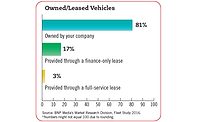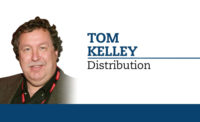Beverage Industry conducted its fifth annual fleet survey earlier this year to get the latest data on the size and makeup of current delivery fleets, as well as operational concerns and strategies.
As with years past, the survey offers the publication an opportunity to see which operations are having the greatest impact on beverage fleets.
Vehicle Choices
The split between passenger vehicles (sedans, SUVs) and light trucks (pickups, small/large vans) has narrowed somewhat, though is still in favor of light trucks. The trends toward end-load equipment in favor of side-load equipment and tractor-trailers in favor of straight trucks continues, but has moderated somewhat in this year’s survey responses.
Compared with last year, survey respondents indicated a lower overall level of new vehicle purchases planned for the next 24 months, likely attributable to the shift toward retailers among the respondents. Of those who are planning new vehicle purchases, the majority still are replacing existing vehicles, but a growing number are expanding their fleets, demonstrating increased confidence in industry growth.
Maintenance & Downtime
Yet again, tires rank as the top maintenance cost for the majority of our respondents, while brakes remain in second place. In third place again this year, engine maintenance still is a top cost among more than half of the respondents.
While the relative rankings among the maintenance cost categories are unchanged from last year, drivetrain costs have significantly dropped, and collision costs have jumped.
Although still ranking high on top of the list among causes of downtime/unplanned repairs, engine and drivetrain failures have dropped from last year on a percentage basis; while brakes and tires have jumped significantly higher.
Again this year, collision repairs continue to be ranked high by more than half of the respondents, though these repairs also should rank high on the unplanned repair scale, as most other types of repairs can be scheduled to avoid downtime when properly managed.
Operational Concerns & Fuel Cost Strategies
Although the relative ranking among top operational concerns are unchanged from last year, insurance cost, vehicle lifecycle cost and fuel price volatility have all increased in the percentage of respondents citing these areas as their largest concerns this year, while regulatory and environmental concerns have moderated.
Route optimization continues to be the most popular fuel cost reduction strategy among this year’s respondents, while replacing older trucks as a means of reducing fuel costs has moderated slightly since last year.
A bit of encouraging news comes in the form of driver training/coaching — one of the most cost-effective options — moving up the list of fuel cost reduction strategies by two spots. It’s critical to remember that a driver can impact fuel economy by as much as 30 percent, so training/coaching still deserves more consideration as a fuel saving strategy. BI
Beverage Industry’s Fleet Survey was conducted by BNP Media’s Market Research Division. The online survey was conducted between June 29 and July 13 and included a systematic random sample of the domestic circulation of Beverage Industry.
Geographically, the respondents were well distributed across the United States, with slightly stronger representation from the Southern region compared with the Midwest, West Coast and Northeastern regions. No U.S. territories were included in this survey. Thirty-eight percent of the respondents had industry involvement in the producer/bottler area, while 30 percent labeled themselves as a retailer. Twenty-eight percent of respondents indicated that they operated in the distributor/wholesaler industry, and the remaining 4 percent listed other for their industry involvement.
When it comes to company size, annual sales revenue between $500,001 and $1 million as well as $1 million and $10 million, each were represented by 19 percent of respondents, respectively. Seventeen percent indicated sales revenue of more than $5 billion. Thirty percent of those completing the survey have between 21 and 30 years of industry experience, while 66 percent indicated that they have the authority to approve and authorize purchases within their operations. Thirty-eight percent of respondents listed their job duties as other corporate management and administration, and 36 percent identified themselves as vice president of operations. Marketing and sales was represented by 8 percent while purchasing and warehousing/distribution/logistics both were represented by 6 percent of respondents, respectively. Eighty-six percent of respondents were male.







